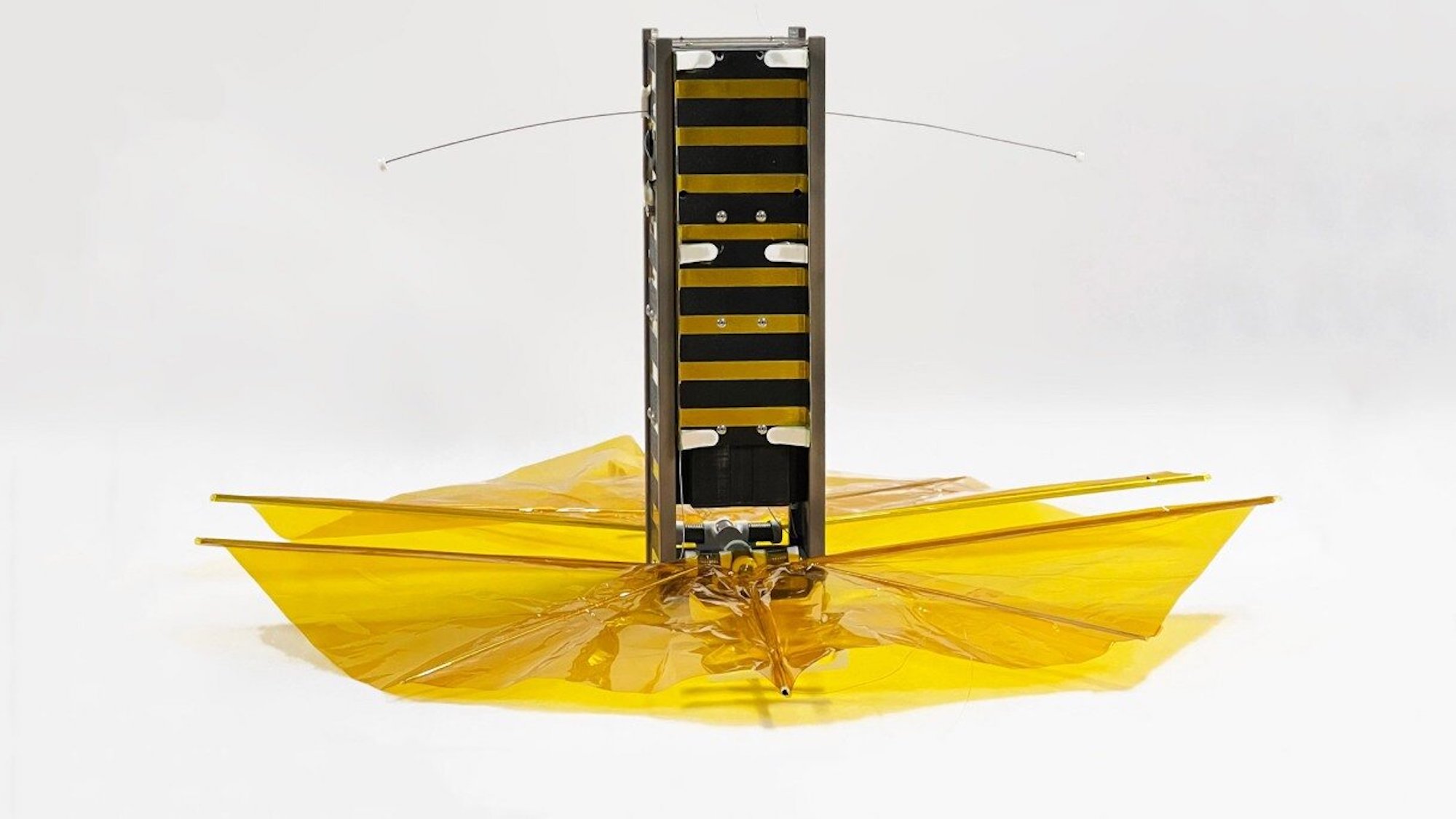

It costs a lot of money to get a satellite into orbit onboard a rocket—around $50 million minimum, to be more specific. While this massively restricts who can access the space industry, it’s not all bad. According to NASA, there are approximately 27,000 hunks of space junk orbiting high above humans’ heads at the moment, with an average of 25 years before they fall from orbit and burn away upon atmospheric reentry.
Still, lowering costs while also shortening satellite lifespans is important if space exploration and utilization is to remain safe and viable. As luck would have it, a group of students and researchers at Brown University just made promising headway for both issues.
[Related: How harpoons, magnets, and ion blasts could help us clean up space junk.]
Last year, the team successfully launched their breadloaf-sized cube satellite (or cubesat) aboard a SpaceX Falcon 9 rocket for the comparatively low production cost of $10,000, with a dramatically shortened lifespan estimated at just five years. What’s more, much of the microsat was constructed using accessible, off-the-shelf components, such as a popular $20 microprocessor powered by 48 AA batteries. In total, SBUDNIC—a play on Sputnik as well as an acronym of the students’ names—is likely the first of its kind to be made almost entirely from materials not specifically designed for space travel.
Additionally, the group attached a 3D-printed drag sail made from Kapton film that unfurled once the cubesat reached orbit roughly 520 kilometers above Earth. Since tracking began in late May 2022, the students’ satellite has already lowered down to 470 kilometers—well below its fellow rocketmates aboard the Falcon 9, which remain around 500 kilometers high.
[Related: These 3D printed engines can power space-bound rockets—or hypersonic weapons.]
“The theory and physics of how this works has been pretty well accepted,” explained Rick Fleeter, an adjunct associate professor of engineering at Brown, in a statement. “What this mission showed was more about how you realize it—how you build a mechanism that does that, and how you do it so it’s lightweight, small and affordable.”
With SBUDNIC’s resounding success, researchers hope implementing similar drag-sail designs at scale for future satellites could help drastically reduce their lifespans, thus reducing space clutter to ensure a safer environment for fellow orbiters, both human and artificial. And if $10,000 is still a bit out of your price range—give the team some time. “Here, we’re opening up that possibility to more people…We’re not breaking down all the barriers, but you have to start somewhere,” said Fleeter.